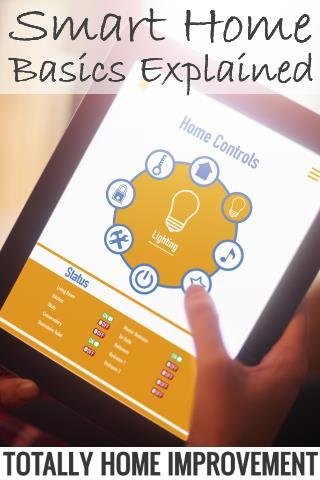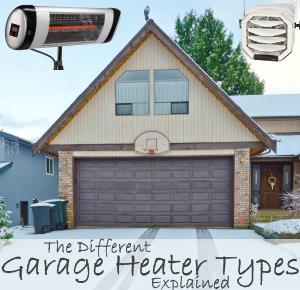
Homes in which the electronic, heating, lighting and all other devices can be taken control of using a PC or a smartphone are known as smart homes. With the immense advancement in technology and a tremendous boost in use of the internet at a global level, the tactful blend of both has resulted in a rise of people with smart home technology. Having control of the residence at your fingertips can have a big impact. Apart from being able to take control of appliances and devices in a better way, enhanced safety, accessibility, energy conservation, and cost effectiveness are some perks that smart home owners enjoy.
Smart Gadgets in Smart Homes
These days, there are a plethora of options that can aid in making your home a safer and a more convenient place to live. Most smart devices contain inbuilt sensors that aid in the smooth functioning of all the gadgets via remote monitoring. Here are some examples of smart gadgets.
-
Smart Thermostats
What if you forget to turn off the thermostat before leaving your house? Of course, you don't want your room burning up when you come home after a hectic day at work. Well, with smart thermostats, you can keep all your worries at bay as the WiFi connectivity enables you to operate your thermostat even when away from home. Moreover, you can switch it on, adjust the temperature and set your ideal conditions so the temperature is just how you like it before you walk through the door. Nowadays most homeowners prefer WiFi enabled thermostat models due to their convenience.The key factor to keep in mind while choosing a thermostat is that “not all thermostats are alike”. Thermostats have compatibility issues so make sure you choose a thermostat compatible with your HVAC system.
-
Smart Lights
You can regulate the light switches with the use of your smartphone from anywhere. Plus, some smart lights also come with an option for automatically changing color so you can opt for settings according to your mood. Smart lights are also a step forward towards energy conservation in general as you can switch them off from anywhere in case it slips your mind before leaving the house.
-
Smart Security Camera
Installing a smart security camera is comparatively an inexpensive investment when compared to a full-fledged CCTV system. Many working couples leave their kids with caretakers and a smart security camera enables working parents to supervise the actions of the caretakers. Another benefit of a smart camera is that you are able to see who is at your door before they even press the doorbell with the aid of motion detection on some systems.
Technology Behind Smart Homes
A quick and cursory glance at your smartphone enables you to let go of all the pinching doubts like, "Did I turn off my coffee maker?", "Did I switch off the TV?", etc. Owing to the tremendous progress in the technology of Internet of Things, you can now connect appliances and devices in your home in order to enable communication among gadgets and determine their communication with you. From wireless systems that are programmable over the internet to the plug-in modules, the technology behind smart homes is more astounding than many people perceive it to be.
Voice Recognition & Control
The best thing about voice controlled gadgets is that you don't have to worry about learning a new remote control system from scratch. All you need to do is command your smartphone and the necessary action is carried out for you. Voice recognition and control technology can work wonders if used in the correct way. Let us take a look at some classic examples that have proven to be quite effective in bridging the gap between humans and machines.
-
Apple Siri
Being completely integrated into iOS 5 and later, Siri is a boon for all iPhone users. Whether it is for making a phone call, playing your favorite piece of music, searching for directions, sending a payment or just looking for recommendations, Siri has got it all covered. There are some accessories that are HomeKit enabled and can be integrated seamlessly with Siri. Thus, you can regulate appliances and supervise your home just by the use of a few judiciously thought out words and Siri will obey all your commands with the help of the inbuilt voice recognition technology.
-
Google Assistant
Google Assistant works more or less in the same way as Siri. It can search for information like the local weather, movie listings, phone numbers, etc. Just like Siri, you can manage your entire house just by using clear voice commands and GA will recognize those commands to perform the desired action.
-
Amazon Alexa
Apart from following the technology enabled in Siri and Google Assistant, Amazon Alexa can also facilitate voice shopping, track packages, order food, stream TV. series and movies. Moreover, the echo speaker provides crystal clear sound quality
Smart Hubs
These are software driven pieces of hardware that can interconnect all of your home automation devices to form a network and facilitate effective communication between them. They merge data from multiple devices and spread it out in different directions. A switch that is built within the hub determines the forwarding the data. Some of the popular smart hubs include:
-
Amazon Echo
The Amazon echo, being one of the most functional smart hubs can perform a wide variety of tasks. You can make phone calls even from the landline via Amazon Echo and leave messages as people did in the 90s. From regulating doors, lights, fans, switches, and temperature to aiding supervision of your home from a distance, the Amazon Echo makes it possible for you to control all aspects of your home. Working parents who can't always find the time to entertain their kids themselves can find the Amazon Echo pretty handy as it can keep them entertained for hours.
-
Apple HomeKit
The simple to use and operate Apple HomeKit provides many other benefits apart from supporting full home automation. It works toward simplifying the entire environment by establishing unique communication protocols. The best thing about this smart hub is that it is highly expandable and scales your growing needs. The security mechanisms make sure you are protected from unauthorized access. Best of all, the entire system is quite easy to set up.
-
Google Home
Google Home is very flexible and any modifications can be incorporated if new requirements arise. The ability to give accurate answers to questions is impeccable and you can also use it to cast video on to your TV.
IoT - Internet of Things
When a bunch of objects are interconnected via a digital network and can be identified via those networks. These interconnected gadgets are the core of home automation. X10, ZigBee, Insteon, and Z-Wave are some of the technologies used for carrying out communication between smart home devices. These technologies are known as protocols. Here are some examples that demonstrate how the concept of a smart home completely rests on interconnected gadgets.
You can take control of the temperature of your house by operating your thermostat from anywhere. You can program the color as well as the brightness of lights in your home if you have smart LED lights. Motion sensors are helpful in determining any unwanted movement and alert you to movements in other parts of the house. Even if it is pitch dark outside, the cameras can capture the footage and let you know who is out there.
Even though there are a plethora of smartphone apps available for home automation purposes, it is better to stick with a single one to avoid confusion. Most smart home devices have their own apps developed for the purpose of operating them. As long as there is an internet connection, you can easily control all devices.
With a tactful blend of Artificial Intelligence and Machine Learning techniques, home automation apps can easily adapt to their respective environments. Prototyping boards such as Raspberry Pi can be used for the creation of smart homes from scratch if you really want to get into the technical side of things yourself. Similarly, a smart home kit can also be purchased in order to begin a home automation project without needing to know anything about programming.
Sensors
One of the resting pillars that create a sturdy foundation for smart homes is the sensor technology. These are some of the common sensors that aid in creating a smart home.
-
Fire or Smoke Detectors
The most prominent cause of property damage that is also life-threatening is fire. Besides detecting traces of smoke and sparks, and these detectors can also comprise sensors that help in determining your overall air quality. For instance, Carbon Monoxide is odorless and colorless, detection is not humanly possible. By notifying you of an increased level of CO, sensors can be lifesavers.
-
Motion Sensors
If there is an unwanted movement in any part of your home, the motion sensors will alert you, thus, preventing any trespassing. The motion sensors are also helpful in homes where there are children and pets as you can be notified regarding their entry in sensitive areas. You can also set the sensors in a way that as soon as you are about to enter the house, it should turn on the lights and any required electrical appliances.
-
Temperature Sensor
A smart thermostat is based on the concept of temperature sensors. It can change the temperature of the home according to the environment outside. It can keep the house in an ideal temperature setting throughout the day. You can also set it on energy saving mode for conserving the power.
Conclusion
The foremost expectations that smart home owners have are that most of their tasks can be accomplished without stepping out of their comfort zones. The concept of home automation has endless opportunities. From sensors, detectors, automatic door openers, smart TV, smart thermostat and enhanced security measures, you can bring huge improvements to home life. Even though the concept of a smart home and IoT has not fully entered the mainstream yet, the technology is on the rise and is undergoing major development. It won't be much longer before most homes we see in an area are fully automated.
You might also like to read:
• The Pros and Cons of Technology's March into our Homes
• Some Smart Shower Features Seem Outright Dumb To Me
Category:



